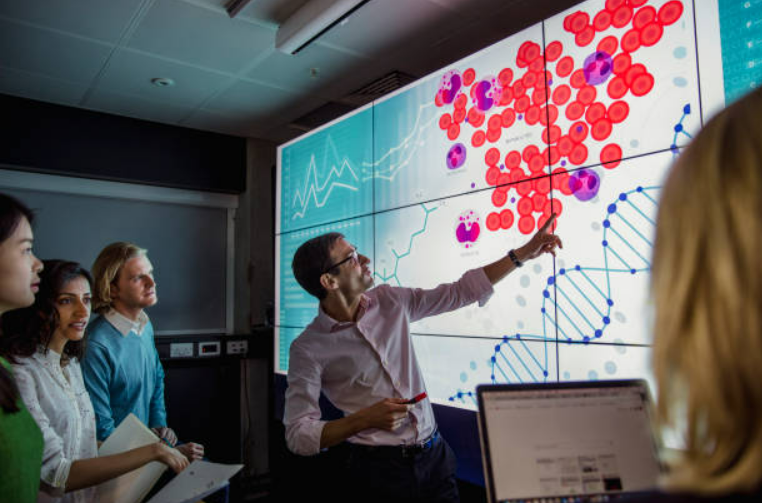In the contemporary society, numerous educational gaps persist, which are hindering holistic personal and professional development. One prominent gap is the lack of assertive communication training, which often leads to misunderstandings, conflict escalation, and ineffective collaboration.
Additionally, many individuals lack adequate knowledge about finances, including budgeting, saving, and investing, which can result in financial insecurity and missed opportunities for wealth accumulation. STEM education gap, which hinder individuals to work access to quality Science, Technology, Engineering, and Mathematics (STEM) education etc.
Addressing these educational gaps is crucial for empowering individuals to navigate diverse social interactions confidently and manage their financial resources effectively.
Factors contribute to gaps
Educational gaps emerge due to a variety of factors:
- Resource Disparities: unequal allocation of funding and facilities creates disparities in educational opportunities.
- Curriculum Limitations: outdated or inadequate curriculum fails to address contemporary needs, for example digital literacy or cultural competency.
- Social Inequality: existing inequalities based on income, race, gender, and location affect access to quality education.
- Teaching Challenges: ineffective teaching methods and insufficient teacher training hinder learning outcomes.
- Lack of Awareness: some topics, like mental health education, lack awareness and resources.
- Cultural Norms: prevailing attitudes prioritize certain subjects, neglecting diverse needs and talents.
- Access Barriers: physical, financial, and social obstacles prevent marginalized groups from accessing education.
Types of educational gaps
Digital Literacy Gap
In an increasingly digital world, many individuals lack essential skills for instance:
- navigating online platforms,
- understanding digital security, and
- critically evaluating online information.
STEM Education Gap
Disparities exist in access to quality Science, Technology, Engineering, and Mathematics (STEM) education, limiting opportunities for many individuals to pursue careers in these fields and contribute to technological advancements.

Cultural Competency Gap
There’s a need for greater understanding and appreciation of diverse cultures, histories, and perspectives. This gap hampers effective communication, collaboration, and inclusivity in multicultural environments.
Health Literacy Gap
Many people lack basic knowledge about
- health, including nutrition,
- disease prevention, and
- mental health management.
This gap contributes to poor health outcomes and disparities in healthcare access.
Environmental Education Gap
With pressing environmental challenges for example climate change, there’s a lack of comprehensive education on environmental science, sustainability practices, and ecological stewardship, inhibiting effective conservation efforts.
Blogs like Greenfrastructures intended to fill gaps, like
- lack of knowledge about sustainable development and good practices,
- ecological stewardship and efforts to reduce ecological footprint, and slow climate change.
Critical Thinking Gap
Critical thinking skills, including
- problem-solving,
- analysis, and
- logical reasoning, are often underdeveloped.
This gap impairs individuals’ ability to evaluate information critically and make informed decisions in various aspects of life.
Career Readiness Gap
Many individuals graduate from educational institutions and majors which not really help them in their life, without the necessary skills for the workforce, including
- communication,
- teamwork,
- adaptability, and
- leadership.
This gap hinders smooth transitions into careers and limits professional success.
Educational Gaps in Engineering
Educational gaps between university education and industry in engineering can include:
Practical Skills
While university programs provide theoretical knowledge, graduates may lack hands-on experience with real-world engineering tools, software, and processes commonly used in industry. These can addresses by increasing dual programs working next to studying.
Industry-Relevant Technologies
Rapid advancements in technology mean that university curricula may lag behind the latest industry tools and techniques, leaving graduates unfamiliar with cutting-edge technologies.
Project Management
Many engineering projects in industry involve
- complex timelines,
- budgets, and
- team dynamics.
Graduates may lack experience in project management, including
- planning,
- scheduling, and
- resource allocation.
Interdisciplinary Collaboration
Engineering projects often require collaboration with professionals from various disciplines, for example
- design,
- manufacturing, and
- business.
University programs may not adequately prepare graduates for interdisciplinary teamwork.
Soft Skills
Effective communication, leadership, and teamwork skills are essential in the workplace but may not be emphasized in traditional engineering education programs.
Regulatory Compliance
Engineers must navigate legal and regulatory frameworks governing their work, e.g.: safety standards and environmental regulations. University programs may not sufficiently cover these aspects of industry practice.
Problem-Solving in Real-World Contexts
While university courses teach problem-solving skills, graduates may struggle to apply them in the context of real-world engineering challenges, where constraints and uncertainties abound.
Closing the Educational Gaps
It requires a multifaceted approach involving various stakeholders and strategies:
Equitable Resource Allocation
Ensure fair distribution of
- funding,
- facilities, and
- qualified teachers across all educational institutions, prioritizing underserved communities.
Curriculum Enhancement
Update curriculum to include relevant and contemporary topics for example
- digital literacy,
- cultural competency, and
- environmental sustainability,
while fostering critical thinking and problem-solving skills.
Diverse Teaching Methods
Implement innovative and inclusive teaching methods that cater to diverse learning styles and needs, providing personalized support for students at risk of falling behind.
Teacher Training and Support
Invest in comprehensive teacher training programs to enhance
- pedagogical skills,
- cultural competence, and
- awareness of social issues,
while providing ongoing support and professional development opportunities.
Community Engagement
Foster partnerships between schools, families, and communities to create a supportive learning environment, offering resources, mentorship, and extracurricular activities that enrich students’ educational experiences.
Access and Affordability
Address barriers to access by
- providing affordable education options,
- improving transportation infrastructure, and
- offering scholarships or
- financial aid to marginalized groups.
Policy Reforms
Advocate for policy changes at local, national, and international levels to promote
- educational equity,
- combat discrimination, and
- address systemic barriers to learning.
By implementing these strategies collaboratively and systematically, we can work towards narrowing the educational gap and ensuring that all individuals have equal opportunities to fulfill their potential and contribute to society.
Partnerships and Startups help
Partnerships between industries and institutions enrich education by
- aligning programs with industry needs,
- providing hands-on experience, and
- fostering research collaboration,
- following and creating upcoming trends,
ultimately preparing students for successful careers.
Type of partnerships
Different types of educational partnerships foster innovation, education and create opportunities to enhance skills and knowledge about new trends.

- Curriculum Development Partnerships: Collaborations to design or update educational programs to meet industry needs.
- Internship and Co-op Programs: Arrangements for students to gain practical experience in industry settings.
- Industry-Sponsored Projects: Projects funded by industry partners, providing real-world challenges for students to solve.
- Research Collaborations: Joint research efforts between academia and industry to address industry-related problems or develop new technologies.
- Professional Development Programs: Opportunities for industry professionals to enhance their skills and knowledge through educational offerings provided by institutions.
- Facilities and Resource Sharing: Sharing of facilities, equipment, and resources between institutions and industry partners to support education and research.
- Advisory Boards and Committees: Industry representatives providing guidance and input on educational programs and initiatives.
Startups
Startups play a crucial role in addressing educational gaps by innovating new solutions to enhance learning outcomes and bridge disparities. These gaps encompass various aspects, including access to quality education, digital literacy, and skill misalignment with industry needs.
Startups often leverage technology to
- create scalable and
- accessible educational tools,
- platforms, and programs that cater to diverse learning needs and demographics.
By collaborating with educational institutions, governments, and NGOs, startups can tailor solutions and innovation to specific challenges, for instance
- improving access to education in underserved communities,
- providing personalized learning experiences, and
- offering upskilling opportunities for the workforce.
Through their agility, creativity, and commitment to social impact, startups contribute significantly to closing educational gaps and fostering a more inclusive and equitable learning ecosystem
Conclusion
In conclusion, addressing educational gaps is not just about narrowing disparities; it’s about creating equitable learning paths where every individual has the opportunity to thrive.
By implementing collaborative strategies and fostering inclusive environments, we can ensure that education becomes a powerful tool for empowerment, enabling individuals from all backgrounds to reach their full potential and contribute meaningfully to society.
Together, we can build a sustainable future where education knows no boundaries and every learner has the support they need to succeed, which helps human development and create a great future for the upcoming societies.
